Mid Gleniron
Cairn (Bronze Age), Chambered Cairn (Neolithic)
Site Name Mid Gleniron
Classification Cairn (Bronze Age), Chambered Cairn (Neolithic)
Alternative Name(s) Mid Gleniron I
Canmore ID 61594
Site Number NX16SE 14
NGR NX 18681 61001
NGR Description Centre
Datum OSGB36 - NGR
Permalink http://canmore.org.uk/site/61594


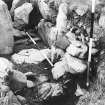

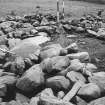
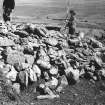
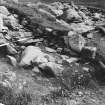
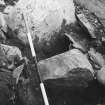


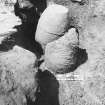

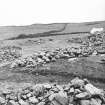

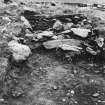
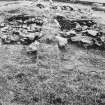
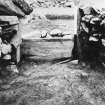






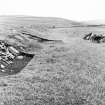


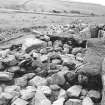


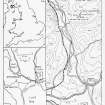
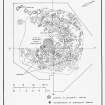




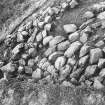

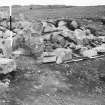
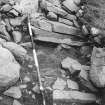
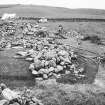










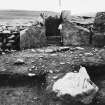

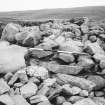
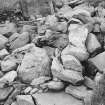

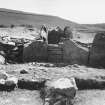







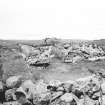
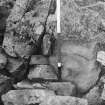


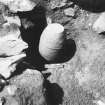
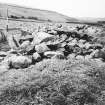


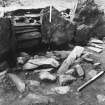


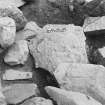


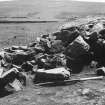




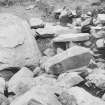


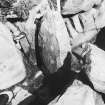
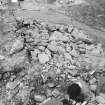
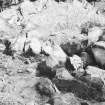


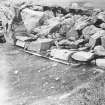
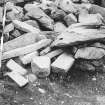



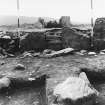

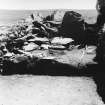
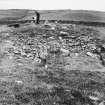


First 100 images shown. See the Collections panel (below) for a link to all digital images.
- Council Dumfries And Galloway
- Parish New Luce
- Former Region Dumfries And Galloway
- Former District Wigtown
- Former County Wigtownshire
NX16SE 14 1867 6100 to 1867 6099
See also NX16SE 27.
(NX 1867 6100) Chambered Cairn (NR)
(NX 1867 6099) Cairn (NR)
OS 1:10000 map (1978)
A chambered long cairn of the Clyde group which excavation by Corcoran in 1963 to 1966 showed to be of multi-period construction. Immediately to the south are the badly disturbed remains of a probable Bronze Age cairn.
The original structure was a small oval cairn with a rectangular chamber opening from the north. A second cairn also with a rectangular chamber opening from the north was built close to the entrance of the original cairn. A facade of orthostats and dry-stone walling, built to flank the entrance to the northern chamber, appears to have been part of the final stage of construction which also involved the enclosing of the two earlier cairns within a straight-sided cairn and the addition of a chamber opening from the west. Apart from the expected Neolithic finds nine cremations in cinerary urns were found in the body of the cairn. The bronze Age cairn actually lay 13' south of the long cairn though prior to excavation they had appeared to form one unit. It had been circular 30' to 33' in diameter with a capping of small stones covering a basal layer of large boulders In the centre cremated human bone was found perhaps comntained within a cinerary urn. The finds are in Dumfries Museum.
J X W P Corcoran 1969; A S Henshall 1972
NX 1867 6100 A grass-covered long cairn generally as described and measuring 21.0m N-S by 12.0m wide at the N end and 11.0m wide at the S end. Seven metres to the S is the partially grass-covered round cairn 10.2m in diameter and 0.6m high.
Surveyed at 1:10 000.
Visited by OS (BS) 6 May 1976.
Excavation (1964)
Excavated by Corcoran in 1963 to 1966
Sources: J X W P Corcoran 1969; A S Henshall 1972
Publication Account (1986)
Excavation of these two long chambered tombs in 1963-6 revealed a multi-period structural sequence of some complexity and provided a better understanding of the development of Clyde cairns in general. They are in somewhat mutilated condition and their special significance is thus historical rather than visual.
Mid Gleniron I (NX 186610) originated in a small rectangular burial chamber (the northernmost), which was contained within a small cairn of probable early neolithic date. A second chamber in a small cairn was then built independently in front of it. Finally, a third chamber was set laterally between the two, all three being joined into a long straight-sided mound with a crescentic north facade. Nine cremations in cinerary urns had been inserted into the south-eastern flank, showing that the cairn had subsequently been used as a burial place in bronze-age times.
The much-ruined Mid Gleniron II, 120m to the southeast, is likewise of multi-period construction. It originated in an oval cairn with an eastward-facing small chamber. A larger, south-facing chamber was then added, the enlarged composite structure being enciosed within a straight-sided cairn with southern facade. The later chamber no longer survives.
To the south of each of the long cairns is a circular burial cairn, that to the south of Mid Gleniron II being a large circular mound about 17m in diameter and 2.75m high. Excavation brought to light a small closed box-like chamber at the centre, the whole structure possibly being contemporary with the nearby chambered tombs. The much-disturbed cairn to the south of Mid Gleniron I yielded a cremated human bone, perhaps originally contained within a cinerary urn. The finds from the excavations are in Nithsdale District Museum, Dumfries.
Information from ‘Exploring Scotland’s Heritage: Dumfries and Galloway’, (1986).
Note (8 March 2022)
The location, classification and period of this site have been reviewed and changed from CAIRN (PERIOD UNASSIGNED), CHAMBERED CAIRN (NEOLITHIC).









































































































